All About Potatoes: 10 Best Potato’s Dishes In The World
Potatoes are a versatile root vegetable and a staple food in many households. They are an underground tuber that grows on the roots of the Solanum tuberosum plant. Potatoes are relatively cheap, easy to grow and packed with a variety of nutrients.
Despite attempts by anti-carb killjoys -- demonizing the addictive appeal of a plate piled with crispy, salty fries -- the potato endures as one of history's most beloved foods.
Fried, baked, mashed and beyond -- whether the recipe calls for Russets or Yukon Gold, red-skinned or purple potatoes -- these are some of the most popular ways to enjoy a potato around the world.
1. Bangers & mash
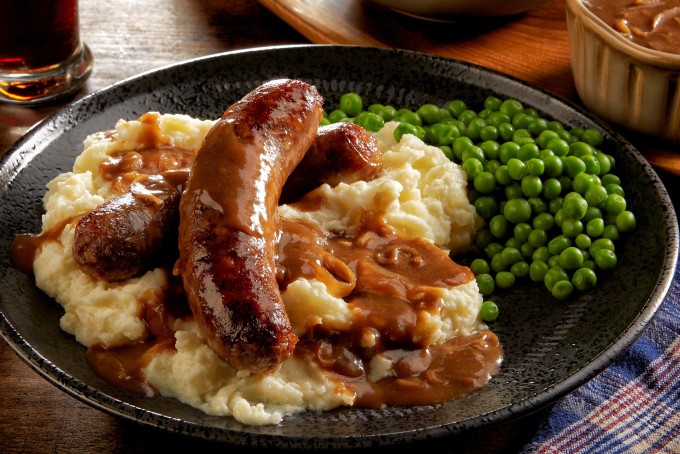 |
| Photo: Pinterest |
Bangers and mash, also known as sausages and mash, is a traditional dish of Great Britain and Ireland, consisting of sausages served with mashed potatoes. It may consist of one of a variety of flavoured sausages made of pork, lamb, or beef (often specifically Cumberland sausage). The dish is usually served with onion gravy, but may also include fried onions and peas.
This dish, even when cooked at home, may be thought of as an example of pub grub, meaning it is relatively quick and easy to make in large quantities.
In 2009, the dish was listed as Britain's most popular comfort food in a survey commissioned by TV channel Good Food.
Although it is sometimes stated that the term "bangers" has its origins in World War II, the term was actually in use at least as far back as 1919. The term "bangers" is attributed (in common usage in the UK) to the fact that sausages made during World War I, when there were meat shortages, were made with such a high water content that they were liable to pop under high heat when cooked.
2. Champ
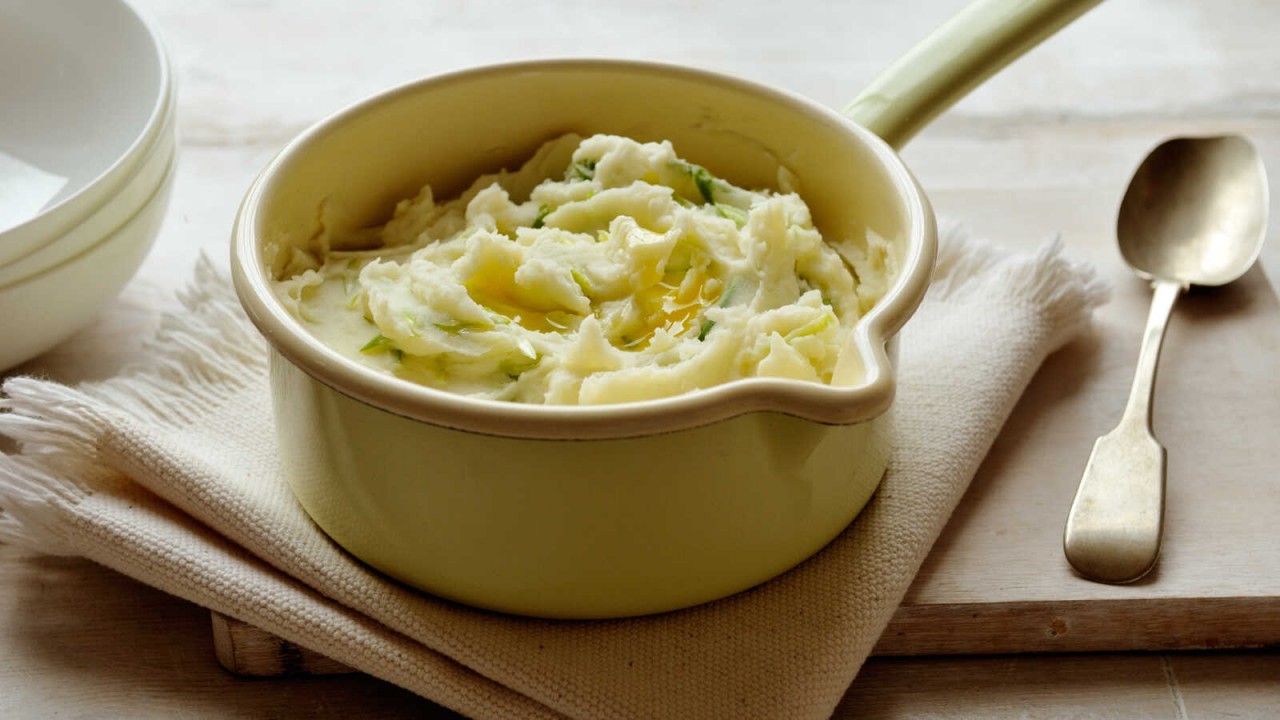 |
| Photo: BBC |
Also known as poundies and brúitín, this Irish comfort dish is made with mashed potatoes, spring onions, and copious amounts of butter and milk. Champ originates from the Ulster countryside where it was previously made with stinging nettle in lieu of onions, though that practice is rarely seen today.
However, there are numerous other variations available across the country, like the colcannon potato mash which uses kale or cabbage instead of scallions. The nutritional value of those ingredients had helped stave off starvation and malnutrition during the harsh times of Irish history, and while maintaining such diet is no longer necessary, many people have developed a favorable taste for both champ and other similar inexpensive traditional dishes.
3. Stoemp
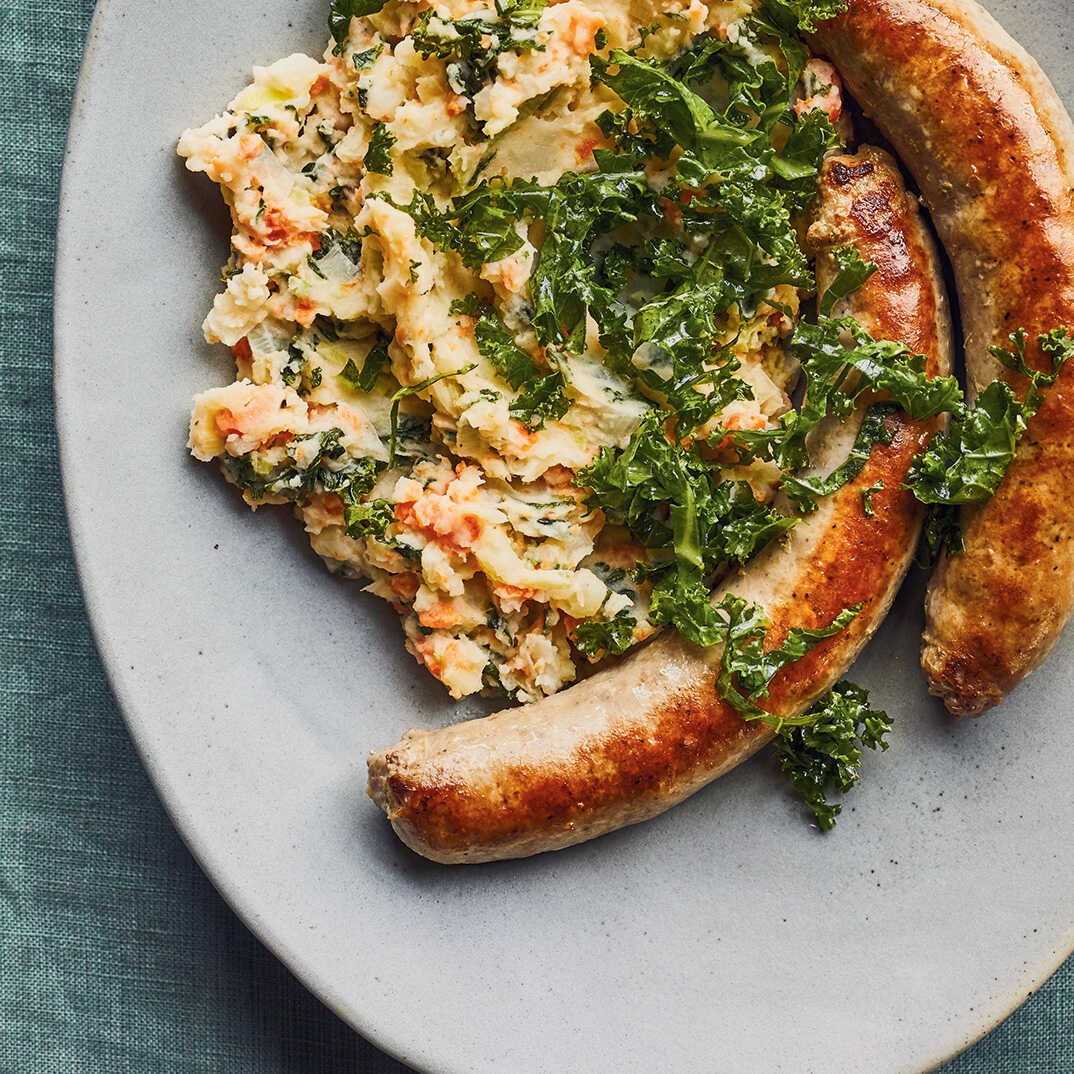 |
| Photo: Ricardo |
Stoemp is Belgian dish of pureed or mashed potatoes and other root vegetables, and can also include cream, bacon, onion or shallot, herbs, and spices.
The name of the dish sometimes includes the kind of vegetables inside it, for example Wortelstoemp includes carrots (wortel). This specific combination may also contain egg yolk.
Stoemp is pronounced [ˈstump], and in some dialects [ˈʃtump]. It is a typical word of Brabantian dialects.
A simple, rural dish, stoemp enjoys wide appeal.
It is a dish of mashed potatoes with one or more vegetables, such as onions, carrots, leeks, spinach, green peas and cabbage, seasoned with thyme, nutmeg or bayleaf.
Stoemp is traditionally featured alongside fried boudin, fried braadworst, grilled bacon, fried mince or fried eggs. In some families, it is served with an entrecôte or a horse tenderloin.
4. Potato meat pie
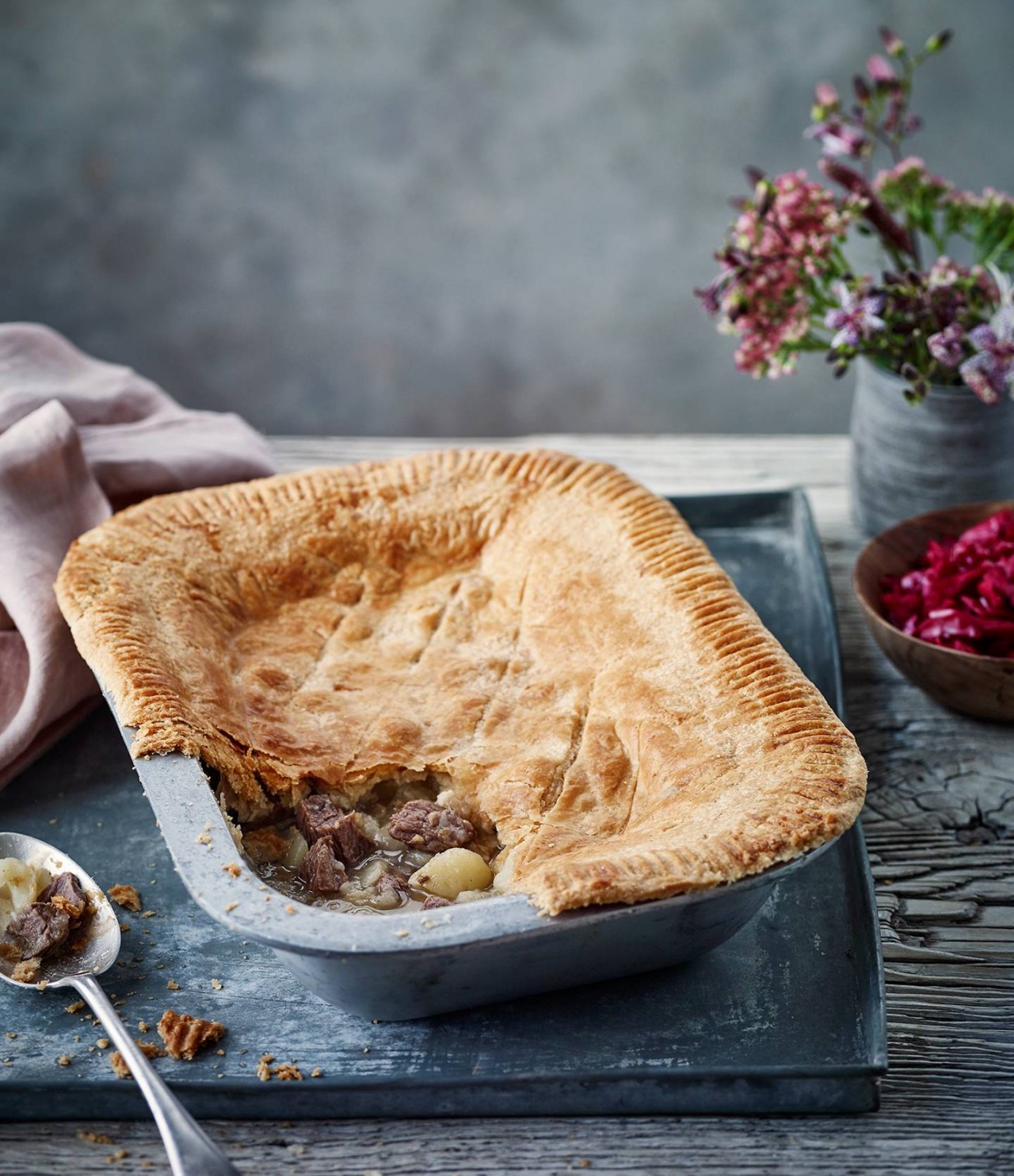 |
| Photo: House & Garden |
Meat and potato pie is a popular variety of pie eaten in England. Meat and potato pie comes in many versions and consists of a pastry casing containing: potato, either lamb or beef, and sometimes carrot and/or onion. They can often be bought in a speciality pie shop, a type of bakery concentrating on pies, or in a chip shop. A meat and potato pie has a similar filling to a Cornish Pasty and differs from a meat pie in that its content is usually less than 50% meat. They can be typically eaten as take-aways but are a homemade staple in many homes. Often it is served with red cabbage.
In 2004, ITV's The Paul O'Grady Show voted the produce of The Denby Dale Pie Company as the UK's best Meat and Potato Pie.
In 2017, Martin Appleton-Clare set a new speed eating record at the World Pie Eating Championship in Wigan, Greater Manchester. Appleton-Clare retained his title, by finishing the meat and potato pie in 32 seconds.
5. Duchess Potatoes
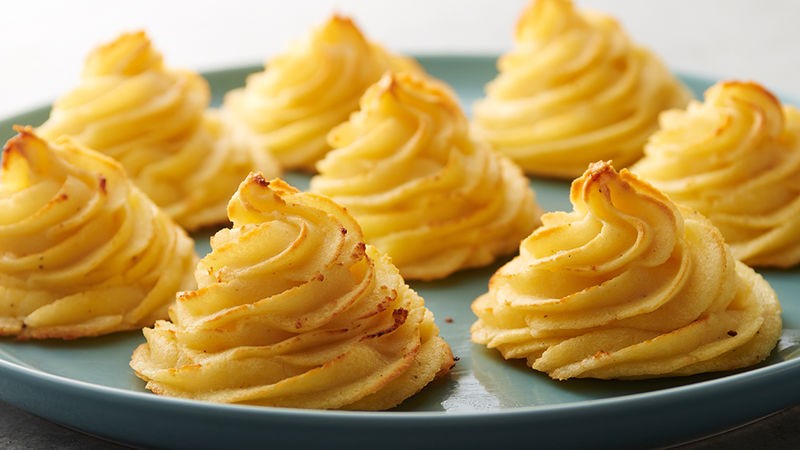 |
| Photo: Tablespoon |
Duchess potatoes (French: pommes de terre duchesse) consist of a purée of mashed potato, egg yolk, and butter, which is forced from a piping bag or hand-moulded into various shapes which are then baked in a high temperature oven until golden. They are typically seasoned similarly to mashed potatoes with, for example, salt, pepper, and nutmeg. They are a classic item of French cuisine, and are found in historic French cookbooks.
The first known recipe for the dish was published in La Nouvelle Cuisinière Bourgeoise in 1746. The phrase à la duchesse became an appellation in French cuisine for any dish incorporating a mashed potato/egg yolk mixture. Recipes for duchess potatoes have been published in American cookbooks since at least 1878. In her 1896 cookbook, Fannie Farmer described the creative potential of duchess potatoes, writing: "Shape, using pastry bag and tube, in form of baskets, pyramids, crowns, leaves, roses, etc. Brush over with beaten egg diluted with one teaspoon water, and brown in a hot oven." In 1902, the Boston Cooking School published a duchess potatoes recipe in its magazine. French cookbook author Auguste Escoffier described duchess potatoes in his highly influential cookbook Le guide culinaire, first published in 1903.
During the Great Depression, the U.S. federal government cooperated with a dozen state agricultural agencies to improve potato breeding. The U.S. Bureau of Home Economics encouraged consumers to try less common potato dishes, such as duchess potatoes. World War II led to domestic food shortages in the U.S., especially of butter, meat and canned foods. In January, 1943, first lady Eleanor Roosevelt released menus for nine family meals served at the White House. One dinner included meatloaf and duchess potatoes. In 1949, the New York Times was promoting duchess potatoes surrounding roast chicken or roast fish as an elegant but inexpensive dining alternative to beef. When Craig Claiborne graduated eighth in his class from the École hôtelière de Lausanne in 1954, his final examination included preparing fish in white wine, with velouté sauce, hollandaise sauce and duchess potatoes.
6. Crocchè
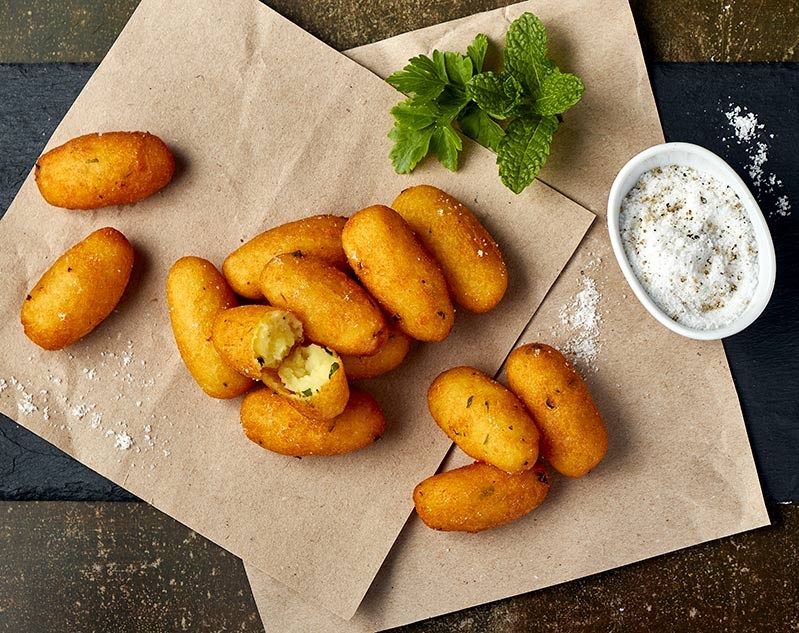 |
| Photo: Cuoche ma buone |
Crocchè are a dish of Neapolitan and Sicilian origin, made from mashed potato and egg, which is covered in bread crumbs and fried.
Crocchè are typically a Southern Italian street food, ubiquitous at friggitorie specializing in fried foods, the Italian equivalent of Fish and chip shops.
Can't decide between creamy mashed potato and a fried, crispy potato fritter? There's a snack for that, and we have the Italians to thank. Crocchè come from Sicily, but are also easy to find in Naples and elsewhere in the country.
In Palermo, they are known as "cazzilli" and back in the day they were a way to use up the oldest potatoes.
Today, they're a fun street-fair snack best enjoyed hot.
In India, a similar snack known as bonda also takes mashed potato (and spices), batters it and deep fries it until golden.
7. Potato wedges
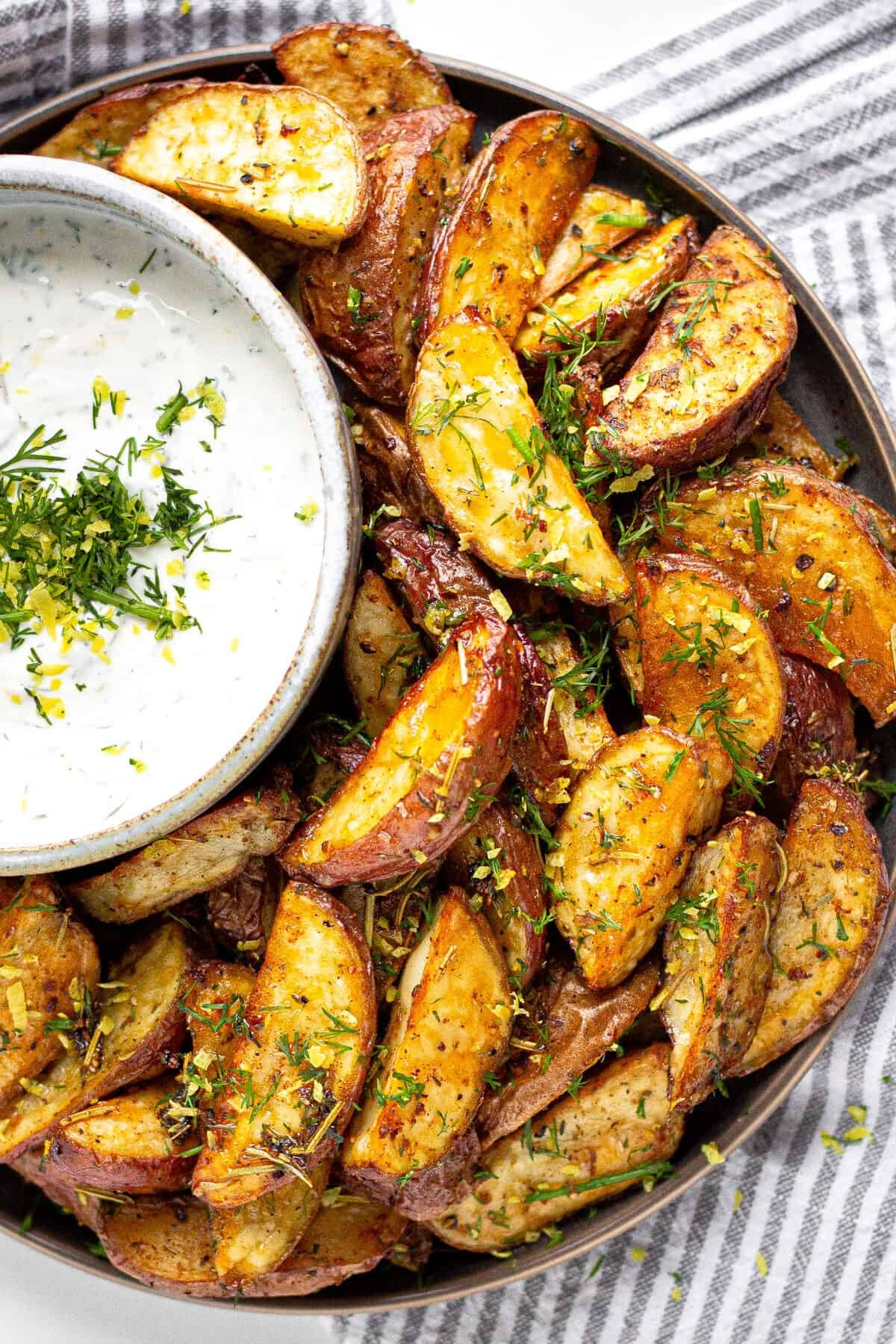 |
| Photo: Midwest Foodies |
Potato wedges are irregular wedge-shaped slices of potato, often large and unpeeled, that are either baked or fried. They are sold at diners and fast food restaurants. In Australia, potato wedges are a common bar food, that are almost always served with sour cream and sweet chilli sauce. One may also use ketchup, ranch, and honey mustard. They are usually seasoned with a variety of spices, commonly paprika, salt and pepper.
In some regions of the United States, particularly Idaho, Oregon, Washington, Montana, Minnesota, Nebraska, Northern Utah, Northeast Ohio, Wisconsin and Upstate New York, a popular variation of potato wedges are known as jojos. Jojos are potato wedges fried in the same vat as chicken and usually eaten plain alongside fried chicken, coleslaw, and baked beans. A variation in spelling and pronunciation is mojos, particularly in Western Canada, the Western United States and Canada's Yukon.
In Germany, they are known as Kartoffelspalten ('potato clefts'), wilde Kartoffeln ('wild potatoes'), Westernkartoffeln ('Western potatoes') or Kartoffelecken ('potato wedges').
In Sweden, they are called klyftpotatis ('wedge-potatoes').
In Russia, they are known as картофель по-деревенски ('village-style potato') or картофель по-домашнему ('homestyle potato').
In the Czech Republic, they are called Americké brambory ('American potatoes').
In Finland, they are called lohkoperunat ('potato sections').
8. Potato chips/crisps
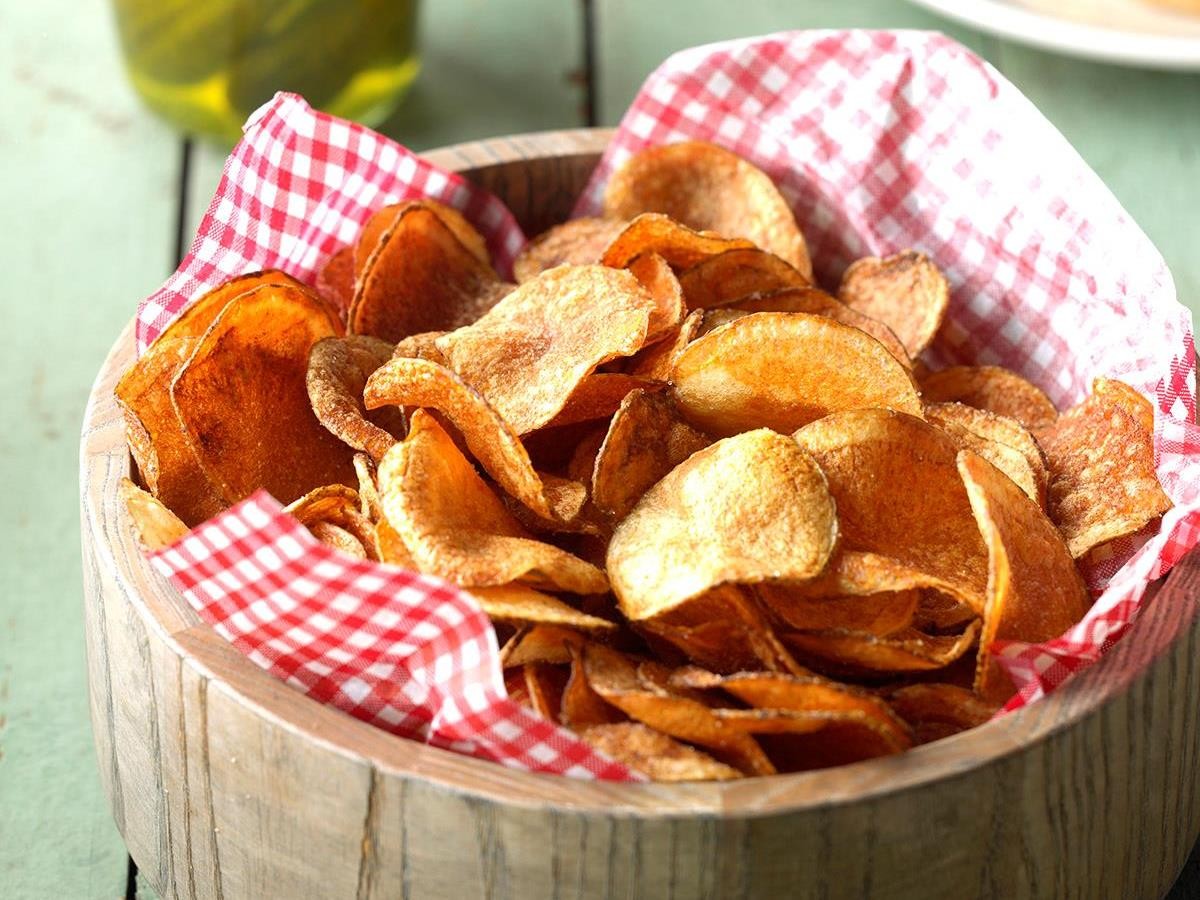 |
| Photo: Taste of Home |
A potato chip (often just chip, or crisp in British and Irish English) is a thin slice of potato that has been either deep fried or baked until crunchy. They are commonly served as a snack, side dish, or appetizer. The basic chips are cooked and salted; additional varieties are manufactured using various flavorings and ingredients including herbs, spices, cheeses, other natural flavors, artificial flavors, and additives.
Potato chips form a large part of the snack food and convenience food market in Western countries. The global potato chip market generated total revenue of US$16.49 billion in 2005. This accounted for 35.5% of the total savory snacks market in that year ($46.1 billion).
The earliest known recipe for something similar to today's potato chips is in William Kitchiner's book The Cook's Oracle published in 1817, which was a bestseller in the United Kingdom and the United States. The 1822 edition's recipe for "Potatoes fried in Slices or Shavings" reads "peel large potatoes... cut them in shavings round and round, as you would peel a lemon; dry them well in a clean cloth, and fry them in lard or dripping". An 1825 British book about French cookery calls them "Pommes de Terre frites" (second recipe) and calls for thin slices of potato fried in "clarified butter or goose dripping", drained and sprinkled with salt. Early recipes for potato chips in the US are found in Mary Randolph's Virginia House-Wife (1824) and in N.K.M. Lee's Cook's Own Book (1832), both of which explicitly cite Kitchiner.
A legend associates the creation of potato chips with Saratoga Springs, New York, decades later than the first recorded recipe. By the late nineteenth century, a popular version of the story attributed the dish to George Crum, a cook at Moon's Lake House who was trying to appease an unhappy customer on August 24, 1853. The customer kept sending back his French-fried potatoes, complaining that they were too thick, too "soggy", or not salted enough. Frustrated, Crum sliced several potatoes extremely thin, fried them to a crisp, and seasoned them with extra salt. To his surprise, the customer loved them. They soon came to be called "Saratoga Chips", a name that persisted into the mid-twentieth century. A version of this story was popularized in a 1973 national advertising campaign by St. Regis Paper Company which manufactured packaging for chips, claiming that Crum's customer was Cornelius Vanderbilt. Crum was already renowned as a chef at the time, and he owned a lakeside restaurant by 1860 which he called Crum's House. The "Saratoga Chips" brand name still exists today.
9. Potato bread
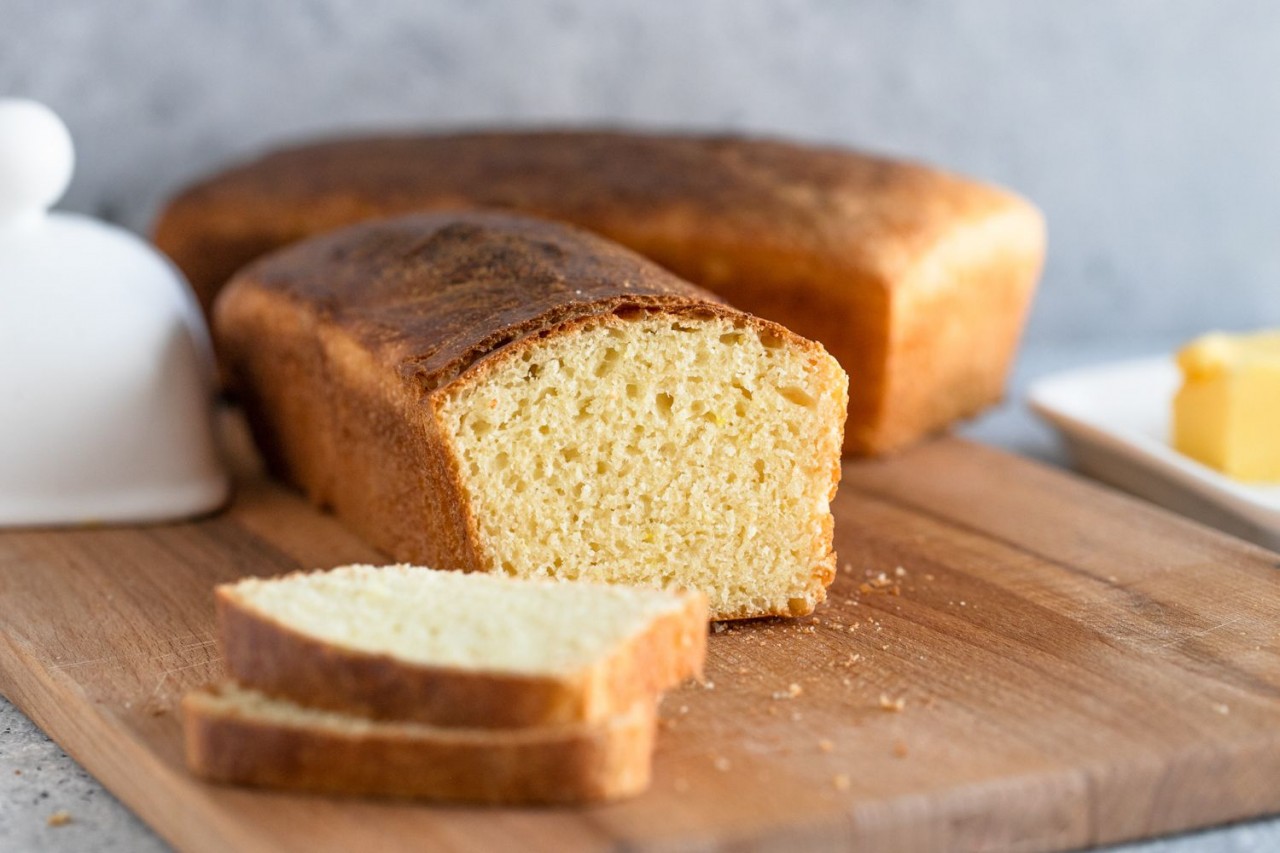 |
| Photo: The Spruce Eats |
Potato bread is a form of bread in which potato flour or potato replaces a portion of the regular wheat flour. It is cooked in a variety of ways, including baking it on a hot griddle or pan, or in an oven. It may be leavened or unleavened, and may have a variety of other ingredients baked into it. The ratio of potato to wheat flour varies significantly from recipe to recipe, with some recipes having a majority of potato, and others having a majority of wheat flour. Some recipes call for mashed potatoes, with others calling for dehydrated potato flakes. It is available as a commercial product in many countries, with similar variations in ingredients, cooking method, and other variables.
Potato bread goes by many regional names, including slims, fadge, potato cake, potato farls, and tatie bread in Ireland. "Potato cake" can actually refer to numerous dishes.
10. Shepherd’s Pie
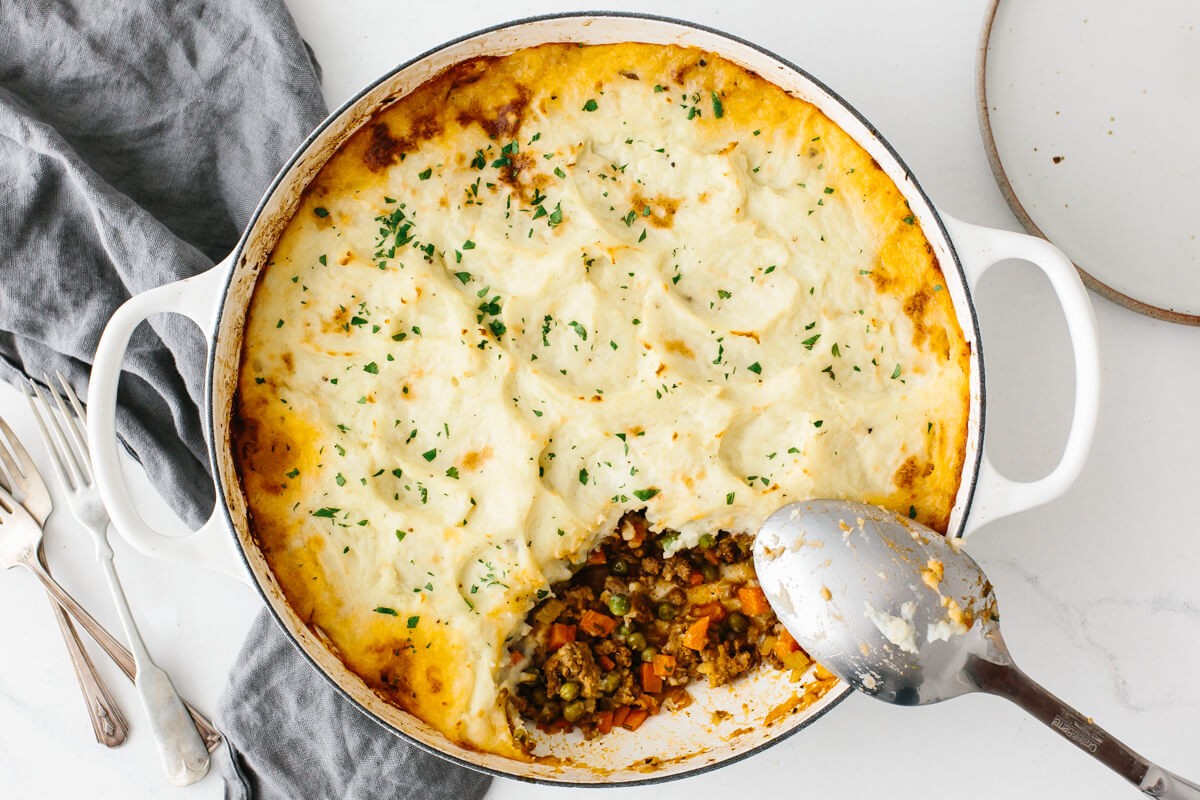 |
| Photo: Downshiftstology |
Shepherd's pie, cottage pie, or hachis Parmentier is a meat pie consisting of cooked minced meat topped with mashed potato.
The dish has many variants, but the defining ingredients are red meat and onions in gravy or sauce, with a topping of mashed potato. Sometimes other vegetables are added to the filling, such as peas, sweetcorn, celery or carrots. It is sometimes also gratineed with grated cheese.
The term cottage pie was in use by 1791.
The term shepherd's pie did not appear until 1854, and was initially used synonymously with cottage pie, regardless of whether the meat was beef or mutton. However, in the UK since the 21st century, the term shepherd's pie is used more commonly when the meat is lamb.
The French name hachis Parmentier is documented in French in 1900, and in English in 1898, and is generally defined as synonymous or equivalent to shepherd's pie. A hachis is anything finely chopped; the English word 'hash' is borrowed from it. 'Parmentier' is Antoine-Augustin Parmentier, after whom many potato dishes were named, as he was instrumental in the promotion of the potato in France in the 18th century.
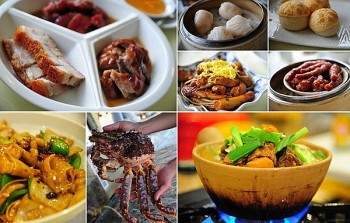 | Classic Hong Kong Food Will Make You Wow Hong Kong is famous for food, and when you visit, you better be ready to eat. |
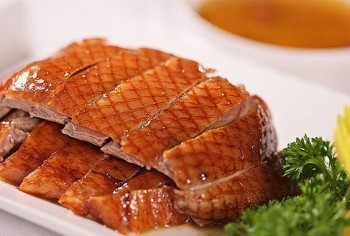 | Must-try Delicacies in Cao Bang Province Not only famous for spectacular landscapes, Cao Bang also attracts tourists with its wide array of mesmerizing delicacies. |
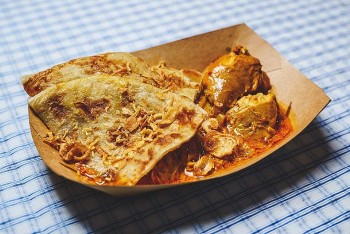 | 6 Flavorful Indonesian Foods You can Make at Home Put these dishes on your Indonesia bucket list; you won’t have trouble finding them when you’re finally able to travel now. |
Recommended
 Handbook
Handbook
Vietnam Moves Up 8 Places In World Happiness Index
 Handbook
Handbook
Travelling Vietnam Through French Artist's Children Book
 Multimedia
Multimedia
Vietnamese Turmeric Fish among Best Asian Dishes: TasteAtlas
 Handbook
Handbook
From Lost to Found: German Tourist Thanks Vietnamese Police for Returning His Bag
 Handbook
Handbook
Prediction and Resolution for the Disasters of Humanity
 Handbook
Handbook
16 French Films To Be Shown For Free During Tet Holiday In Vietnam
 Handbook
Handbook
Unique Cultural and Religious Activities to Welcome Year of the Snake
 Handbook
Handbook


